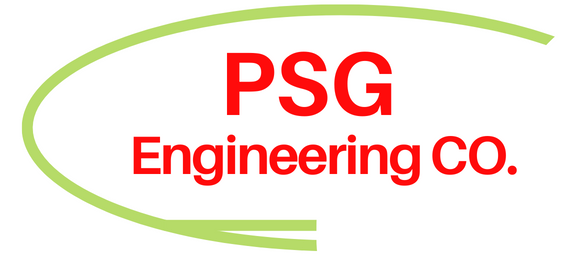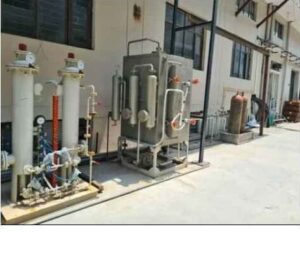Ammonia Cracker Unit
Ammonia cracking is an extremely cost-effective method for producing hydrogen gas on-site for industrial purposes. In this process, the electrically heated furnace is maintained at a temperature of 850°C. The furnace contains a centrifugal cast retort, which is filled with a nickel catalyst. It is at this point that the ammonia undergoes cracking in the presence of the nickel catalyst. As a result, the process separates the vital element into 75% hydrogen gas and 25% nitrogen gas, with a dew point of (-)30°C.
It is worth noting that nitrogen gas is typically inert. Therefore, this mixture is considered to be pure hydrogen gas. It has become the most economical, reliable, and widely used source for on-site hydrogen generation in both small and large industries. Following the ammonia cracking unit, a molecular sieve purifier is employed to reduce residual ammonia content and obtain a highly dry gas. This purifier reduces ammonia levels to 1 part per million (ppm) and lowers the dew point of the gas to (-)80°C.
Technical Specifications:
- Capacity: 1Nm3/hr to 200Nm3/hr
- Purity: 100 PPM TO 1-PPM un-cracked Ammonia
- Pressure: Up to 6 Bar without Booster compressor
- Dew Point: up to (-) 80°C
- 2NH3 = 3H2 + N2
Salient Features:
- Low Capital cost
- Virtually maintenance free
- Low running cost
- Available in capacities
| Product | Ammonia Cracker |
| Material | Mild Steel |
| Color | White |
| Gas Used | Ammonia |
| Ambient Temperature | 5 To 50 Deg C |
| Surface Finish | Painted |
| Capacity | 1Nm3/hr To 500Nm3 |
| Usage | Industrial Use |
| Pressure | 0.5 To 25 Bar |
| Power Source | Electric |
| Dew Point | -80°C |
| Quality | Excellent Quality |
| Manufacture By | PSG Engineering Co. |

